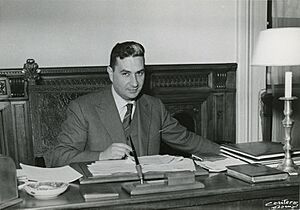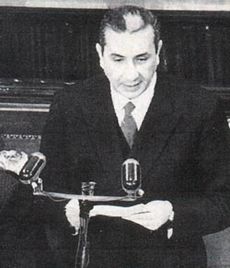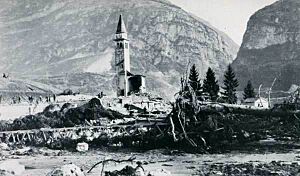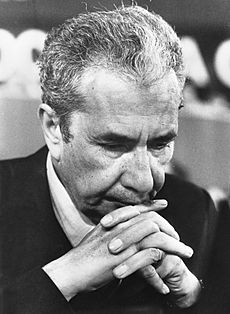Aldo Moro facts for kids
Quick facts for kids
Aldo Moro
|
|||||||||||||||||||||||||||||||||||||||||||
|---|---|---|---|---|---|---|---|---|---|---|---|---|---|---|---|---|---|---|---|---|---|---|---|---|---|---|---|---|---|---|---|---|---|---|---|---|---|---|---|---|---|---|---|
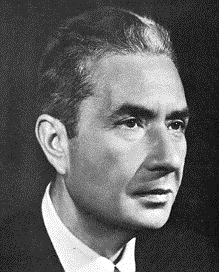 |
|||||||||||||||||||||||||||||||||||||||||||
| Prime Minister of Italy | |||||||||||||||||||||||||||||||||||||||||||
| In office 23 November 1974 – 30 July 1976 |
|||||||||||||||||||||||||||||||||||||||||||
| President | Giovanni Leone | ||||||||||||||||||||||||||||||||||||||||||
| Deputy | Ugo La Malfa | ||||||||||||||||||||||||||||||||||||||||||
| Preceded by | Mariano Rumor | ||||||||||||||||||||||||||||||||||||||||||
| Succeeded by | Giulio Andreotti | ||||||||||||||||||||||||||||||||||||||||||
| In office 5 December 1963 – 25 June 1968 |
|||||||||||||||||||||||||||||||||||||||||||
| President | |||||||||||||||||||||||||||||||||||||||||||
| Deputy | Pietro Nenni | ||||||||||||||||||||||||||||||||||||||||||
| Preceded by | Giovanni Leone | ||||||||||||||||||||||||||||||||||||||||||
| Succeeded by | Giovanni Leone | ||||||||||||||||||||||||||||||||||||||||||
|
|||||||||||||||||||||||||||||||||||||||||||
|
|||||||||||||||||||||||||||||||||||||||||||
|
|||||||||||||||||||||||||||||||||||||||||||
| Personal details | |||||||||||||||||||||||||||||||||||||||||||
| Born |
Aldo Romeo Luigi Moro
23 September 1916 Maglie, Kingdom of Italy |
||||||||||||||||||||||||||||||||||||||||||
| Died | 9 May 1978 (aged 61) Rome, Italy |
||||||||||||||||||||||||||||||||||||||||||
| Cause of death | Murder | ||||||||||||||||||||||||||||||||||||||||||
| Political party | Christian Democracy | ||||||||||||||||||||||||||||||||||||||||||
| Spouse |
Eleonora Chiavarelli
(m. 1945) |
||||||||||||||||||||||||||||||||||||||||||
| Children | 4 | ||||||||||||||||||||||||||||||||||||||||||
| Alma mater | University of Bari | ||||||||||||||||||||||||||||||||||||||||||
| Occupation | Professor | ||||||||||||||||||||||||||||||||||||||||||
| Signature |  |
||||||||||||||||||||||||||||||||||||||||||
Aldo Romeo Luigi Moro (born September 23, 1916 – died May 9, 1978) was an important Italian politician. He was a leading member of the Christian Democracy party. He served as Prime Minister of Italy twice, first from 1963 to 1968, and again from 1974 to 1976.
Moro also worked as the Minister of Foreign Affairs and held positions as Minister of Justice and Minister of Public Education. From 1959 to 1964, he was the leader (secretary) of the Christian Democracy party. On March 16, 1978, he was kidnapped by a far-left group called the Red Brigades. He was killed after 55 days.
Aldo Moro was one of Italy's longest-serving prime ministers after World War II. He helped bring about many social and economic changes that modernized Italy. He is known for trying to work with the Communist party leader, Enrico Berlinguer. This idea was called the Historic Compromise. Moro is seen as one of the key figures in creating the modern Italian centre-left political movement.
Contents
Early Life and Education
Aldo Moro was born in 1916 in Maglie, a town near Lecce in the Apulia region of Italy. His father was a school inspector, and his mother was a teacher. When he was four, his family moved to Milan, but they soon returned to Apulia. He finished high school in Taranto.
In 1934, his family moved to Bari, where he studied law at the local university. He graduated in 1939. After graduating, he became a professor, teaching law at the University of Bari.
In 1935, Moro joined a Catholic student group called the Italian Catholic Federation of University Students (FUCI). In 1939, he became the president of this group, a role he held until 1942. During his university years, Italy was ruled by the fascist government of Benito Mussolini. Moro took part in student competitions organized by fascist student groups. In 1943, he helped start a newspaper called La Rassegna.
In July 1943, Moro helped create the Code of Camaldoli. This document was a plan for economic policy made by Italian Catholic groups. It later guided the economic policies of the Christian Democrats.
In 1945, Aldo Moro married Eleonora Chiavarelli. They had four children: Maria Fida, Agnese, Anna, and Giovanni. In 1963, Moro became a professor at La Sapienza University in Rome.
Beginning His Political Journey
Aldo Moro became very interested in politics between 1943 and 1945. He first showed interest in the social-democratic ideas of the Italian Socialist Party (PSI). However, he soon began working with other Christian democratic politicians who were against the fascist government. During this time, he met important figures like Alcide De Gasperi and Amintore Fanfani.
On March 19, 1943, the group officially formed the Christian Democracy (DC) party. Moro joined the left-leaning part of the DC. In 1945, he became the director of the magazine Studium and president of a Catholic lay association.
In 1946, Moro was chosen as vice-president of the Christian Democracy party. He was also elected to the Constitutional Assembly. This group worked to write the Italian Constitution. Moro was elected from the Bari–Foggia area.
In 1948, he was elected to the new Chamber of Deputies. He became the Vice Minister of Foreign Affairs. After 1952, Moro helped create a new group within the DC called the Democratic Initiative faction.
Joining the Government
In 1953, Moro was re-elected to the Chamber of Deputies. He became the leader of the Christian Democracy group in Parliament. In 1955, he was appointed Minister of Justice in the government led by Antonio Segni.
In May 1957, Moro became Minister of Education. He stayed in this role until February 1959. During his time as Education Minister, he introduced the study of civic education in schools. This taught students about their rights and duties as citizens.
In March 1959, Moro was elected Secretary of the Christian Democracy party. He worked with Amintore Fanfani to form a new alliance with the Italian Socialist Party (PSI). This alliance was approved by the party in 1962.
The 1963 election showed less support for the Christian Democracy party. This was because they had started to work with the Socialists. Some right-wing voters left the DC. Moro initially did not want to be Prime Minister, preferring to lead the party. However, after a temporary government, Moro became the new Prime Minister.
First Time as Prime Minister
Aldo Moro's first government was supported by the Christian Democracy, the Italian Socialist Party, and other smaller parties. This group was known as the Organic Centre-left.
Social Changes and Reforms
During Moro's time as Prime Minister, many social changes were made.
- The 1967 Bridge Law helped with urgent housing needs.
- A law in 1963 provided money for university students with lower incomes.
- A law in 1968 introduced voluntary public pre-elementary education for young children (ages three to five).
- In 1965, the social security program was expanded.
- The legal minimum wage was increased.
- Pensions were improved, and workers could retire earlier after 35 years of work.
- A "social pension" was created to ensure a basic pension for all members, mostly paid by the state.
- Laws in 1966 and 1967 extended health insurance to small traders and retired farmers.
- In 1968, family allowances were extended to unemployed people receiving benefits.
Vajont Dam Disaster
Moro also had to deal with the aftermath of the Vajont Dam disaster. On October 9, 1963, a huge landslide happened near the dam. This caused a massive wave of water to spill over the dam, destroying several villages and killing 1,917 people.
Before the disaster, there had been warnings about the mountain's instability. The company that owned the dam and the government had ignored these signs.
Unlike the previous Prime Minister, Moro took strong action. He condemned the managers of the company and removed government officials who had overseen the dam's construction.
Political Challenges
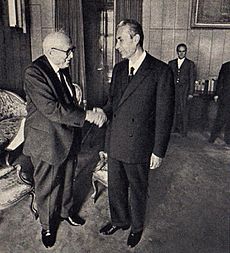
In June 1964, Moro's government faced a challenge over funding for private education. He resigned, but managed to form another government with the same centre-left parties.
In August 1964, President Antonio Segni became ill and resigned. In the presidential election that followed, Moro and his allies worked to elect a left-leaning politician. Giuseppe Saragat, a leader of the PSDI, was elected president. He was the first left-wing politician to become President of Italy.
End of First Term
The centre-left government, which was new for Italy, stayed in power for almost five years. After the 1968 election, Moro's allies, the Socialists, lost many votes. The Socialists decided to leave the government. Moro was then forced to resign, and a new government was formed only by Christian Democrats.
Minister of Foreign Affairs
In 1969, Aldo Moro became Italian Minister of Foreign Affairs. He held this position under several Prime Ministers.
Pro-Arab Policies
As Foreign Minister, Moro continued a policy that favored Arab nations. He made an agreement with Yasser Arafat, a Palestinian leader. This agreement, known as the "Moro pact," meant that Palestinian groups would not carry out terrorist attacks in Italy. In return, they could transport weapons through Italy without being stopped. This agreement was later confirmed by others involved.
Moro also dealt with the difficult situation in Libya after Muammar Gaddafi took power. Libya was important to Italy because of its history and its energy resources.
Presidential Election and Bombing
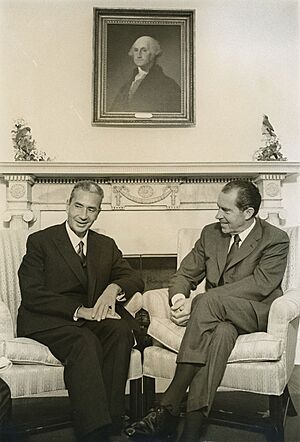
In the 1971 presidential election, Moro was considered as a candidate. However, Giovanni Leone was eventually elected president.
On August 4, 1974, a bomb exploded on the Italicus Express train, killing 12 people. Moro's daughter later said that her father was supposed to be on that train but got off at the last minute to sign some documents. Some believe Moro was the real target of the attack.
Second Time as Prime Minister
In November 1974, Aldo Moro became Prime Minister again. He led a government of Christian Democrats and Republicans, with support from the Socialists.
During this second term, his government continued to make important social improvements. They increased benefits for pensioners and improved health insurance for certain diseases.
Osimo Treaty
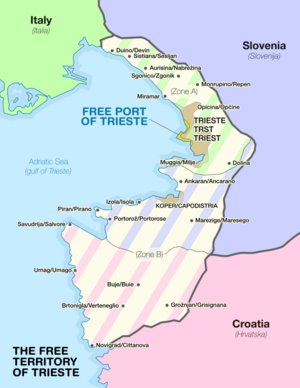
During his time as Prime Minister, Moro signed the Osimo Treaty with Yugoslavia. This treaty officially divided the Free Territory of Trieste. The city of Trieste went to Italy, and part of the Istrian peninsula went to Yugoslavia.
Some Italian nationalists criticized the treaty. They felt that Italy was giving up too much land that had historical ties to Italy. Some even called for Moro to be charged with treason.
Resignation
Moro had a good relationship with the Communist leader, Enrico Berlinguer. This helped his governments stay stable. In 1976, the Socialist party leader withdrew support for the government. This forced Moro to resign.
The Historic Compromise
After the 1976 election, the Communist Party gained a lot of votes. Aldo Moro believed it was necessary for the Christian Democrats and the Communists to work together. He wanted to make the government represent more people and parties. This idea was called the Historic Compromise.
Between 1976 and 1977, the Italian Communist Party started to move away from the Soviet Union. This new idea was called Eurocommunism. This made it more acceptable for Christian Democrats to consider working with them. The two parties began to discuss working together during a time of big social problems.
Moro's idea of a government that included Christian Democrats and Socialists, with support from the Communists, was strongly opposed by both the United States and the Soviet Union. The U.S. worried that communists in the government would learn about NATO military plans. The Soviets saw it as Italy's Communist Party becoming too independent from Moscow.
Kidnapping and Death
On March 16, 1978, a far-left group called the Red Brigades kidnapped Aldo Moro in Rome. They stopped his cars and killed his five bodyguards. On that day, Moro was on his way to a meeting where a new government, supported by the Communist Party for the first time, was to be approved. This was part of Moro's plan for the Historic Compromise.
After his kidnapping, workers went on strike, and police searched for Moro. Even Pope Paul VI, a friend of Moro's, offered to take his place.
Negotiations and Letters
The Red Brigades offered to free Moro if several of their imprisoned members were released. The Italian government took a strong stand, saying they would not give in to terrorist demands. However, some politicians disagreed with this.
During his captivity, Moro wrote many letters to political leaders and to Pope Paul VI. In his letters, Moro said that saving lives should be the most important thing. He urged the government to meet the kidnappers' demands. Most Christian Democracy leaders argued that Moro's letters were written under pressure and did not reflect his true wishes. They refused to negotiate. Moro's family strongly disagreed with this position. Pope Paul VI asked the terrorists to release Moro "without conditions."
Murder
When it became clear the government would not negotiate, the Red Brigades held a "people's trial" for Moro. They found him guilty and sentenced him to death. They sent a final demand: if 16 Red Brigades prisoners were not released, Moro would be killed. The Italian authorities launched a large search, but it was unsuccessful.
On May 9, 1978, the terrorists shot Moro ten times. His body was found in the trunk of a red car in Rome. After his body was found, the Minister of the Interior, Francesco Cossiga, resigned. Pope Paul VI personally led Moro's funeral service.
His Impact and Legacy
Aldo Moro is considered one of the key figures who shaped the modern Italian centre-left political movement. Throughout his political life, he brought about many changes that deeply affected Italian society. He worked to move the Christian Democracy party towards more left-leaning policies, first by cooperating with the Italian Socialist Party, and later with the Italian Communist Party.
Because of his efforts to bring about reforms and his tragic death, Moro is often compared to leaders like John F. Kennedy and Olof Palme.
In 2012, the Holy See (the Vatican) began the process to consider Aldo Moro for beatification, which is the first step to becoming a saint in the Roman Catholic Church. This process was paused for a while but has since been restarted.
Electoral History
| Election | House | Constituency | Party | Votes | Result | |
|---|---|---|---|---|---|---|
| 1946 | Constituent Assembly | Bari–Foggia | DC | 27,801 | ||
| 1948 | Chamber of Deputies | Bari–Foggia | DC | 62,971 | ||
| 1953 | Chamber of Deputies | Bari–Foggia | DC | 39,007 | ||
| 1958 | Chamber of Deputies | Bari–Foggia | DC | 154,411 | ||
| 1963 | Chamber of Deputies | Bari–Foggia | DC | 227,570 | ||
| 1968 | Chamber of Deputies | Bari–Foggia | DC | 293,167 | ||
| 1972 | Chamber of Deputies | Bari–Foggia | DC | 178,475 | ||
| 1976 | Chamber of Deputies | Bari–Foggia | DC | 166,260 | ||
Films About Aldo Moro
Many films have been made about Aldo Moro's kidnapping and murder. Some of these include:
- Todo modo (1976)
- Il caso Moro (1986)
- Year of the Gun (1991)
- Broken Dreams (Sogni infranti, 1995) - a documentary
- Five Moons Plaza (Piazza Delle Cinque Lune, 2003)
- Good Morning, Night (Buongiorno, notte, 2003) - shows the kidnapping from a kidnapper's view
- Romanzo Criminale (2005) - shows authorities finding Moro's body
- Les derniers jours d'Aldo Moro (The Last Days of Aldo Moro, 2006)
- Il Divo (2008) - highlights the role of Giulio Andreotti
- Piazza Fontana: The Italian Conspiracy (2012)
- Exterior Night (2022) - a film and miniseries
See Also
 In Spanish: Aldo Moro para niños
In Spanish: Aldo Moro para niños
- Propaganda Due. An Italian secret organization.
- La Cagoule. A far-right organization that committed acts of terrorism.
Images for kids


